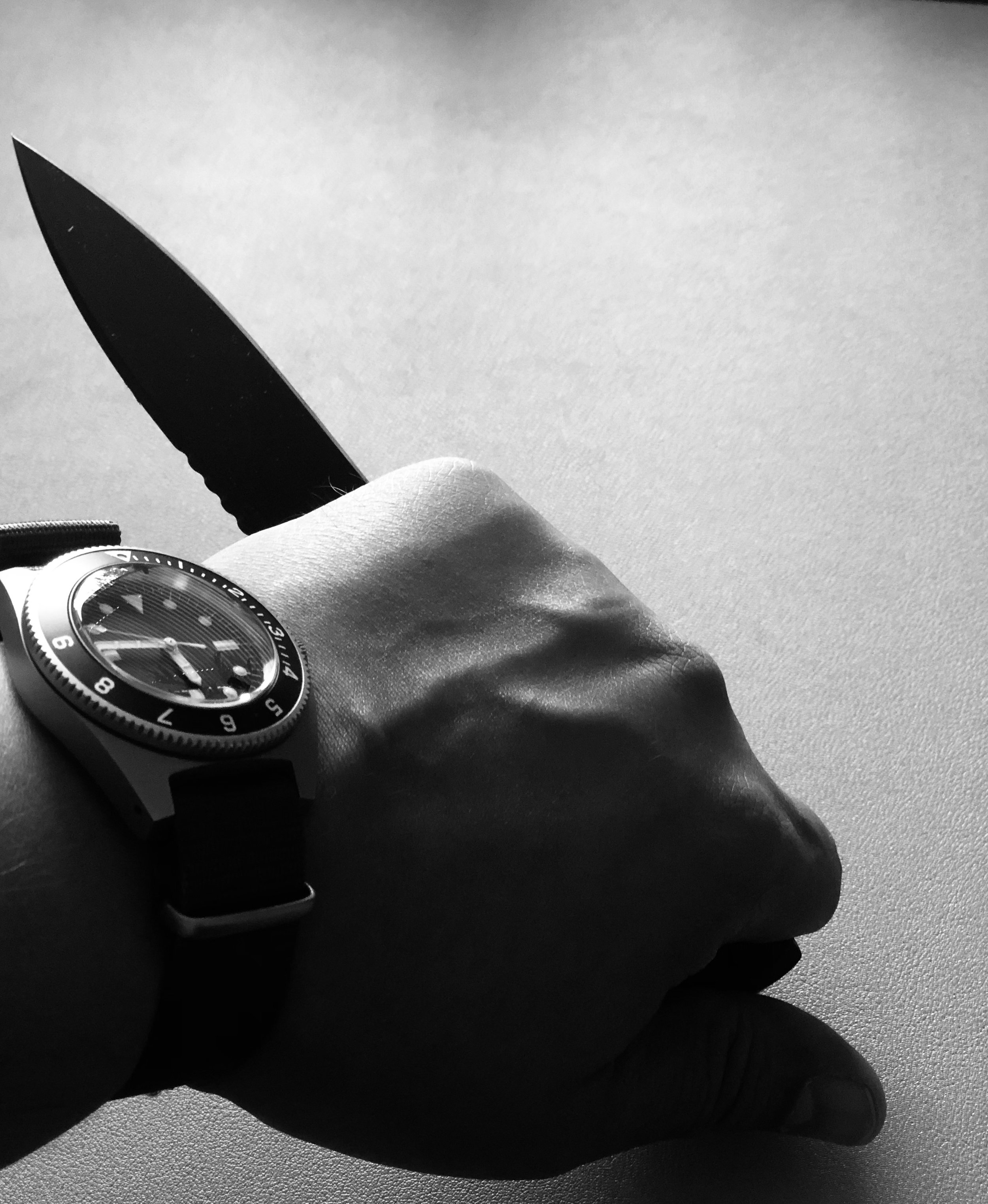For the past couple of years, I have rotated between three knives for EDC. The Emerson Knives Roadhouse Mini, the Emerson Knives CQC7 Mini, and the Black Scout Survival TUSK Karambit. The knife laws in NYC prohibit folding knives that lock, and they prohibit any knife longer than four inches. I have carried the Emerson folding knives fully aware of the repercussions. However, for the sake of simplicity I have decided to move away from folding knives to fixed blades. If a knife is needed for defense, I do not want to waste precious moments opening one. Even for trained individuals, the need to draw and open a knife presents a risk for failure. A fixed blade lends it self to gross motor skills and can be deployed without additional measures. I will continue to use my Emerson knives in some capacity, but I no longer want to be dependent on a folding knife for defensive action. To fill this role along with the TUSK Karambit, I have acquired the SEAF from Forward Observations Group. It is designed by medically retired Navy Seal, Wolf Forty.
The SEAF is a fixed blade, 8 inches in overall length, with 4 inches of blade length. The knife is made from CPM 154 steel, not to be confused with 154CM. The difference is in the CPM production process. CPM 154 provides greater edge retention and higher corrosion resistance than 154CM. It has a Rockwell hardness of 60, and the knife weighs in at 3.8oz without the sheath. Outstanding specs aside, of fundamental importance is the design. With the knife in hand, the ergonomics blows me away. Dagger up or dagger down, my grip on the knife feels equally secure.
The dual grip capabilities of the SEAF remind me of two other popular knives on the market. The Dynamis Blade by Dynamis Alliance and the Darter designed by Haley Strategic and produced by Toor Knives. While those are great knives in their own respect, I find the SEAF to be the superior option. The Dynamis and Darter seem more regulated to fighting and defensive action. While still maintaining its qualities as a fighting knife, the spear point architecture of the SEAF provides more of a belly to allow for easier cutting and slicing than the other knives.
Wolf Forty has also designed a second knife, called the SEAF Jr., which maintains the qualities of the full sized SEAF, just smaller in stature. The knife has a 3.5 inch blade and is designed for everyday carry. The SEAF Jr. was actually first released last year, and produced by Half Face Blades. Another release of the SEAF Jr. will be happening in the next week or so. I think it would be awesome if different knife makers work with Wolf Forty to produce their own iteration of the SEAF. Time will tell. I am very happy with mine. Based on your own needs, I highly recommend picking up either the full size SEAF or the Jr. Be sure to follow Wolf Forty on Instagram and keep an eye on Forward Observations Group for future releases.

